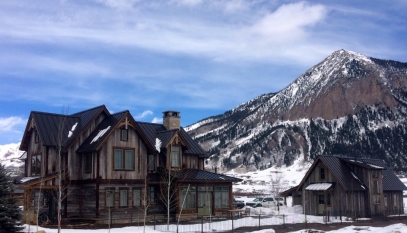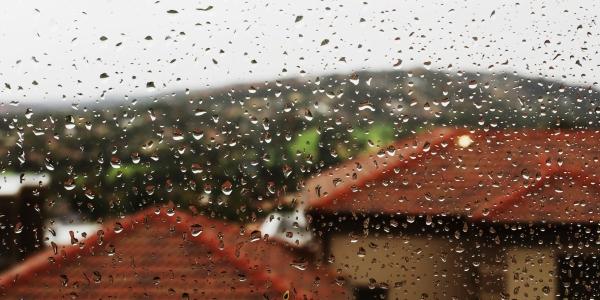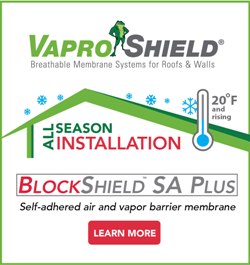Ice Dams Cometh: MRA Advises Homeowners on How to Avoid Costly Winter Damage

As Below-Zero Temperatures Strike, Leading Industry Alliance Says Rooftop Readiness Is Essential
Baby, it’s cold outside and while up on the rooftop the reindeer may paw, if the home has ice dams, it could lead to unpleasant surprises this winter.
Winter rooftop ice dams can cause major damage, wreak havoc on roof durability and can result in costly maintenance issues. While many homeowners blame faulty gutters for freezing over, the root of roof ice dam problems is much more complex.
When icy winter weather and snow hits, ice dams occur when roof temperatures fluctuate, falling and rising by more than 32 degrees. As snow starts to melt, it can re-freeze near roof soffits and overhang areas, which do not get as warm. That can cause a dam, where melting water backs up and seeps into the home, damaging walls, ceilings and leading to mold issues. Ice dams can get worse as water freezes, re-freezes and continues to build up.
For asphalt shingle roofs, ice dams may lead to damaged or displaced shingles, leaving pathways for serious water problems and roof failure, resulting in thousands of dollars in repair costs. Temperature fluctuations are the biggest culprit when it comes to ice dams forming and experts say to help prevent them, it’s important to choose your roof material wisely and pay attention to details, including:
#1. Choose the right roofing material
Thanks to smooth surfaces, special coatings and temperature control capabilities, metal roofs can help prevent ice dams from forming while also withstanding heavy ice and snow loads. With tight, interlocking installation systems, a well-constructed metal roof is naturally impervious to water and can last 50-plus years without ever needing to be replaced, even in extreme weather conditions. As a bonus, metal roofs also are proven to be more energy efficient, helping reduce wintertime utility bill costs while offering maximum protection for homes.
#2. Insulate to prevent temperature fluctuations
Metal can help reduce the risk of ice dams, but without proper insulation, any roof can be subject to ice dam formation. Attic and ceiling insulation of R-38 or more is commonly recommended in colder regions. Check building codes in your area and make sure your insulation meets or exceeds standards. For extra protection, ice and water shields and waterproof underlayment also can help guard against water intrusion.
#3. Ensure all season ventilation
Good eve and ridge ventilation is just as important in cold weather as in warm. Soffit-to-ridge ventilation systems help maintain proper and consistent roof temperatures and are recommended, no matter what the roofing material type.
#4. Stop air leaks
While ventilation is essential, it must be managed correctly. That means making sure that warm interior air is not allowed to pass into attic spaces and cause roof temperatures to raise. While proper insulation helps, sealing all ceiling openings and leaks also is key. Use caulk or foam insulation to help seal wiring, plumbing, light fixture, exhaust fan openings and more.
Ineffective, potentially damaging (and dangerous) methods for trying to get rid of ice dams include chipping away at iced up gutters, which does nothing to stop ice dams, or worse, getting on ladders or on top of roofs to try and clear frozen material.
“The old saying that an ounce of prevention is worth a pound of cure is certainly true in this case. The goal is a well-designed system that helps keep the roof at the same temperature as the eves and helps prevent ice dams from forming in the first place,” said Renee Ramey, executive director of Metal Roofing Alliance. “That means using the right material, taking steps to insulate and controlling airflow properly before cold weather strikes.”
About Metal Roofing Alliance (MRA)
Representing metal roofing manufacturers in the United States and Canada, the Metal Roofing Alliance (MRA) was formed in 1998 as a nonprofit organization to help educate consumers about the many benefits of metal roofs. The main objective of MRA is to increase awareness of the beauty, durability and money-saving advantages of quality metal roofs among homeowners, as well as to provide support for metal roofing businesses and contractors. For more information, visit MRA.






















Comments
Leave a Reply
Have an account? Login to leave a comment!
Sign In